Features (articles)
Japanese food shopping in Lyon, plus different Asian stores as sources for Japanese food

This is a continuation of my series on Japanese food shopping, and frugal eating, in Europe. Previously I visited Paris and Düsseldorf's Japantown.
Lyon, the third largest city in France and arguably the second most important one after Paris, does not have a large Japanese expat or immigrant population. However, there are some Japanese corporations that have factories or offices in the area, not to mention a large university population. So in terms of the availability of Japanese groceries in France, it ranks second to Paris, although it trails behind by a large margin.
The main reason I've been interested in Lyon as a source for Japanese food is that we are seriously considering getting a house in the Provence. Lyon is about a 2 1/2 hour drive from the Haut-Provence (northern Provence), the area we're looking at, so it would be my closest source. (Marseille, which has a Paristore but no Japanese groceries, is about the same distance away, and Avignon, about a 45 minute drive, has two tiny Chinese groceries.) I could order non-perishables from the stores in Paris such as Workshop Issé, or from Japan Centre and so on, not to mention have stuff sent over or bring them back from Japan, but that doesn't work for things like tofu, konnyaku, produce and frozen foods.
It also gives me a chance to talk a bit about where exactly you can find the Japanese ingredients that are mentioned here, regardless of the town you're in, because the shopping options in Lyon are limited yet straightforward.
Option 1 - Kazuki: The Japanese-owned Japanese grocery store
Kazuki (storefront pictured above) is a tiny, jewel-like boutique. In terms of presentation, it has a lot in common with Workshop Issé, but where Workshop Issé is selling high-end food and alcohol, Kazuki is at its heart just a regular Japanese grocery store. Things like cans of wasabi peas, ochazuke packets and run-of-the-mill furikake which only cost a few euros at most are displayed as if they were Hermés scarfs on sleek shelves. This is the Japanese aesthetic and penchant for neatness gone to the extreme.
Everything about Kazuki is beautiful and well presented, even their takeout bentos, which are neatly wrapped up in ribbon:

With a few exceptions, Japanese grocery stores tend to be rather neat and tidy places (though I've never seen one as pretty as Kazuki). They also tend not to carry any other Asian ingredients, though they may have a few Korean items.
Obviously a Japanese grocery store should be the first place to look for Japanese ingredients. If you want things like Japanese soy sauce from Japan, real mirin (hon mirin) rather than mirin-flavored cooking liquid (mirin fuumi choumiryou), go to a Japanese store, However, they can be a bit more expensive than other options, and because many Japanese grocery stores are small, the selection can be limited, especially when it comes to fresh produce.
Option 2 - Kimchi: The Korean-owned Korean grocery store

Kimchi, which is just a few blocks away from Kazuki, is a tiny yet fairly typical Korean grocery store. Korean stores always carry a large amount of Japanese items; usually the selection runs around 50/50 Korean/Japanese. Older Korean people often speak some Japanese.
I really liked Kimchi, because it also carries some 'biologique' items such as nigari (used to make tofu) and kuzu or kudzu powder (used to make kuzumochi, goma dofu and other things).
If you are lucky enough to have a large Korean market near you, it may be your first stop in a quest for Japanese foodstuffs, since they are likely to have most of the fresh produce used in Japanese cooking too. (Kimchi is too small to have any fresh produce unfortunately.)
Option 3 - Supermarché Asie: A Chinese owned Chinese grocery store
In terms of larger Asian grocery stores, there are ones that try to cover all of eastern and southern Asia, and ones that just concentrate on a particular region. Supermarché Asie, which is in the same general neighborhood as Kazuki and Kimchi, clearly concentrates on east Asia: China, Korea and Japan. And, although I don't speak a word of Chinese I can sort of tell apart Cantonese vs. Mandarin and different dialects/pronounciations (well, just aa bit), and I did get the impression that the store is owned by people from Taiwan. Taiwan has much stronger ties to Japan than mainland China, so a Taiwanese-owned store is much more likely to stock Japanese things.Of course, it's difficult to tell apart a Taiwanese store from any other kind of Chinese store just by reading labels, so you'll just have to look around.
The good thing from the standpoint of someone interested in East Asian cooking in general, is that a store like this can be a one-stop shopping destination.
Option 4 - Paristore: A general Asian/Exotic Food grocery store
Paristore is a chain of Asian supermarkets that has stores throughout France. I've only been to the one in Lyon so far, so my impressions are of this store.
Paristore is ostensibly a Chinese supermarket, but it also carries many other 'exotic' foodstuffs, from African to Middle Easten to Indian, Thai and so on. This does mean that the selection of Japanese products is quite small. While I did see Japanese-style rice (from Spain, Italy and California) and a few Japanese condiments, there were little else. However, many Chinese ingredients can be used in Japanese cooking, so it's not a total waste of time to go to a store like this.
What you have to look out for (and this holds true of Supermarché Asie too) are products that may look Japanese, with Japanese writing on them, which really aren't Japanese at all. For example, canned green tea is never sold with sugar in it in Japan, but it seems that green tea meant for the southeast Asian market often is. I also spotted some Chinese snacks (manufactured in Taiwan) with fake Japanese writing on them, in the way that many Japanese products have fake English, or Engrish, on them!
From the standpoint of Japanese ingredient availability, I think you can categorize most Asian markets in European and North American areas into these four categories. Three other categories are: Chinese stores catering to people who came from mainland China or Hong Kong (they carry very little if any Japanese food items); Thai/Malaysian Southeast Asian stores (these also carry very little if any specifically Japanese things); and south Asian/Indian stores (again not many Japanese ingredients if any at all, but may have vegetables that are used in Japanese cooking such as okra, taro root/satoimo, bitter gourd and sweet potatoes.) There are stores fitting all of these categories in Zürich, incidentally.
Special thanks to Céline, who has been great about keeping the Lyon and Provence sections of the Japanese Grocery Stores in France listing so up-to-date! That page is where you will find all the addresses and other pertinent information for the stores described below.
Filed under: japanese ingredients shopping franceWorkshop Issé: Purveyor of the finest Japanese food and sake in the heart of Paris

From the outside, Workshop Issé looks like just another unassuming little Japanese grocery and gift store. There are quite a few stores of this nature scattered about Europe these days. But inside this little boutique in the heart of the Japanese quarter in Paris, you can experience something quite special: A crash course on top quality artisanal Japanese food and drink.
Inside the tiny store, sleek modern shelves are filled with what, to the untrained eye, might seem like the normal Japanese cooking ingredients - soy sauce, vinegar, spices, sake and other alcoholic beverages. Look closer though, and you soon see that these are no ordinary products. There's a soy sauce that's been aged for 2 years in ancient barrels; a pitch-black sweet miso that's been aged for 3 full years; finely sliced and dried battera konbu seaweed for making marinated mackerel. There are salted cherry blossoms that have been matured for six months, so no trace of bitterness remains. There are gardenia seeds (kuchinashi no mi), used as a natural yellow colorant - I've never seen these for sale outside of Japan, anywhere. There are what seem like dozens of fine sakes and shouchuus, and vinegars of all flavors and colors. This is a store with some seriously high end foodstuffs for sale.

The variety and quality of the selection is a little overwhelming, even for someone like me who at least knows what the products are. This store would be quite intimidating to someone not familiar with Japanese cuisine. But the Workshop part of Workshop Issé's name is a clue to their selling approach. Here, you can do a sampling of products, a degustation in fact (the method normally used to by a wine maker or merchant to sell wines), gently guided by a knowledgeable staff member, at least one of whom is a sake sommelier.
I had a chance to sit down and chat with with Monsieur Toshiro Kuroda, the owner and president of Workshop Issé. Having owned and run a Japanese restaurant in Paris for nearly 4 decades, he started Workshop Issé two years ago. His main reason, he said, was simply because he couldn't get a hold of the high quality ingredients he wanted from Japan through existing channels, so he decided to import them himself. There are no mass produced products here. All are of the highest artisanal quality; a typical supplier has 20 employees or less, and has been in business for more than 200 years. Here's M. Kuroda with his dog Pii-chan.

Besides selling via their web site and the boutique directly to customers, they also supply some of the best professional kitchens in France. For instance, if you've had the yuzu-flavored macaroons from Pierre Hermé, the yuzu juice and powder came from Workshop Issé. They also sell to the Michelin three star restaurant Troisgros.
I asked M. Kuroda about his marketing approach. He said that his mainly French customers take very well to the concept, since they are after all used to buying wine this way. They also don't blink an eye at the prices for their Grand Cru equivalent sakes, which can cost up to €250 per bottle and more.
It's obvious that M. Kuroda, not to mention his staff, take great pride in what they are doing. And no wonder - their product lineup would be impressive even in Tokyo. I don't know of a store like it anywhere, certainly not outside of Japan.
My budget that day was not up to buying a Grand Cru sake, so I picked up a few things that intrigued me. Here are a bottle of ume vinegar, and aged soy sauce. I love the classic labels, and the simple list of ingredients - for the soy sauce, just soy beans, salt, wheat. The ume vinegar is made from organic ume plums.

And here's some stone ground yuzu powder. Now I usually have this sent to me from Japan (or I buy it there), but it's nice to know it's available on this side of the world. The fragrance of this slightly coarse powder is wonderful, and the slightly bitter citrusy taste is addictive.

Is Workshop Issé worth a detour in Paris, even if you go to Tokyo regularly? I would say absolutely yes, unless you are thoroughly familiar with Japanese cuisine, speak and read Japanese fluently, or have a Japanese gourmet guide at your side. The combination of the carefully selected range of products and the knowledgeable staff, who speak Japanese, French and English, make this store a real winner. And if you aren't going to Tokyo on a regular basis and live anywhere near Paris or are visiting, and love Japanese food and cooking, it's a must stop.
I guess the only negative things about Workshop Issé are: They don't really have much in the way of fresh ingredients. There is a small refrigerated section with a limited supply of things like tofu and vegetables, plus real grated wasabi in a tube (€15, but worth it). Also, their prices are not cheap by any means, but you are paying for top quality.

- Workshop Issé
- 11 rue Saint Augustin (Paris 2)
- Tel: 01 4296 2674
- Open 7 days, 11:00 - 19:30 with no lunch break. Closed on national holidays.
- French and Japanese website. Mailorder within France and throughout Europe (but verify if they can ship something to your destination first).
- Besides food and alcoholic drinks, they also have a small selection of dinnerware and gift items (they did have a couple of nice bento boxes).
You may also want to check out the rest of the Issé & cie. Japan-in-Paris mini empire: Bizan, a high end kaiseki restaurant; Issé, a 'tempura and tapas' restaurant; Momonoki, a tonkatsu and obento restaurant; and O-bento, a bento delivery service. All are described on this page (French). You can buy some readymade foods (osouzai) from the last three establishments at Workshop Issé too.
For a look at cheap Japanese eats in Paris, see A Frugal Eats mostly Japanese blitz through Paris.
(Merci beaucoup to Clotilde of Chocolate & Zucchini for telling me about Workshop Issé!)
Filed under: food travel japanese ingredients shopping france parisA Frugal Eats (mostly Japanese) blitz through Paris
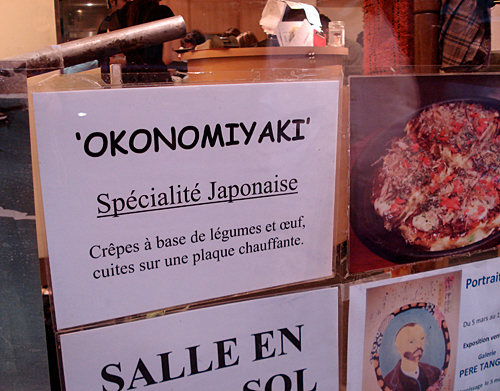
As I wrote a couple of days ago over on Just Bento, I recently spent a scant 3 days in Paris, on the way from Brittany back to Zürich. A normal person would spend such a short time in the gastronomical capital of [insert your favorite geographic superlative here] exploring la cuisine française. But my objective for this trip was different. My digestive system and palate were rather exhausted from 2 weeks of consuming the delicious salty cultured butter, crême fraiche, galettes (crêpes), seafood in creamy sauces, and oh yes, pastries to die for, all washed down with cider both brut (dry) and doux (less dry), that are the specialities of Brittany. I was craving the plain white rice and tea like you wouldn't believe.
Because of a lack of planning, we had to book a rather expensive hotel in Paris, which meant our food budget was really tight. No indulging on sushi fests and kaiseki dinners, even though both are possible there. So I made it my objective to pursue cheap Parisian Japanese eats. Therefore, this article is part of Frugal Food Month. (See how I shoehorned that in?)
There seem to be three major concentrations of East Asian food in Paris. One, and the biggest, is the Chinatown area in the 13th arrondissement. Then there's another enclave of sorts in the 15th arrondissement. But for tourists with little time, like myself, the most convenient area especially for Japanese food is the area that straddles the 1st and 2nd arrondissements near the Opéra. Every other storefront on certain streets there seem to be either a Japanese restaurant, or a Japanese-oriented store.
You do need to take a good look at those allegedly Japanese restaurants though. I have been reading a lot of Japanese expat bloggers (and there are quite a lot of them in Paris), and most complain that these so-called Japanese restaurants are not good. Not all are run by Japanese people or have Japanese cooks. That does not of course preclude an establishment from not being good, but I guess you could say that the odds may worsen.
So, the best thing to do may to just follow the crowds. By 19:00 (7pm), the popular restaurants are crammed full. Some even have lines around the block.
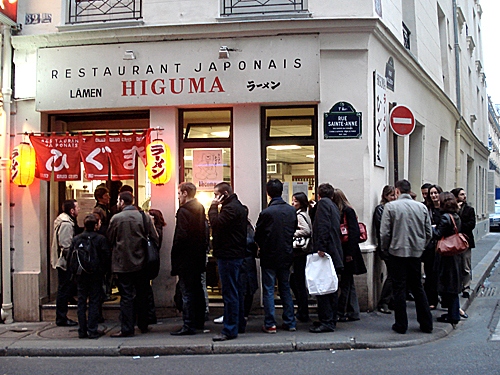
The center of this Japanese community in Paris is arguably Kioko, a small grocery store that's been in business for 37 years.
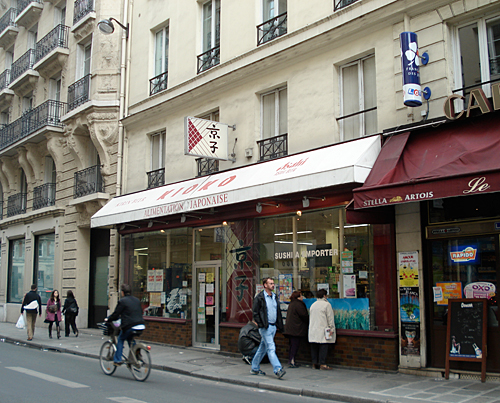
Inside, you'll find a regular Japanese grocery store. The selection is comparable to similar stores you'll find elsewhere - nothing fancy, all the basics. They also have a baby food club (join up to order Japanese baby food), special events, a free Japanese community paper, and so on. (For bento fans, they do have a small selection of boxes upstairs.)
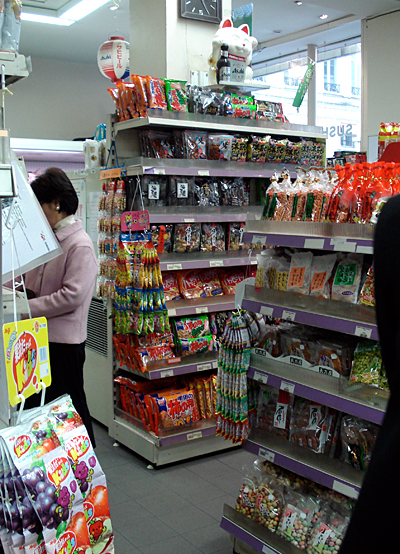
BookOff is a Japanese second hand book store, with branches throughout Japan as well as in several North American cities. They have two stores in Paris right by each other. This is the Opéra store, at 29-31, rue Saint-Augustin. They have a Point Carte that you can also use at Kioko (get enough stamps on your card, get free stuff.) (Book Off English web site.)
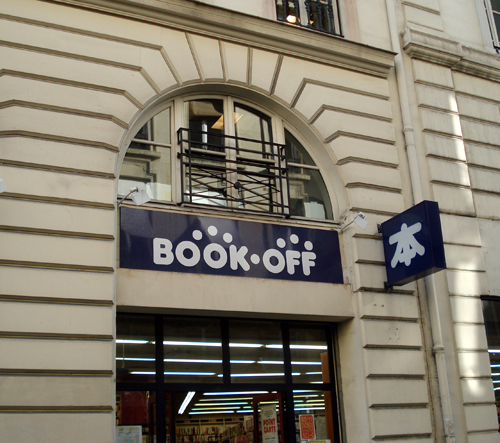
There are also Korean grocery stores that carry a lot of Japanese food. Here's Ace Opéra. I found their prices to be a tad cheaper for things like bottled green tea compared to Kioko and the bento store Jujiya.
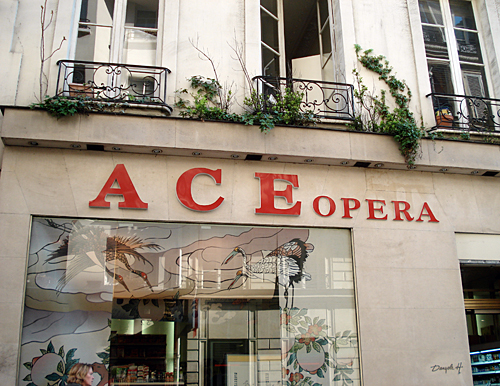
The food
So, what did I eat? Well, the best cheap food I found in the area (besides takeout bento) was ramen. We tried a couple of places, and weren't disappointed at either. Here is tonkotsu ramen (pork bone soup ramen) at Sapporo Ramen. The soup was very good, the noodles could have been better. But then, this is Paris, not Tokyo, and I was happy.
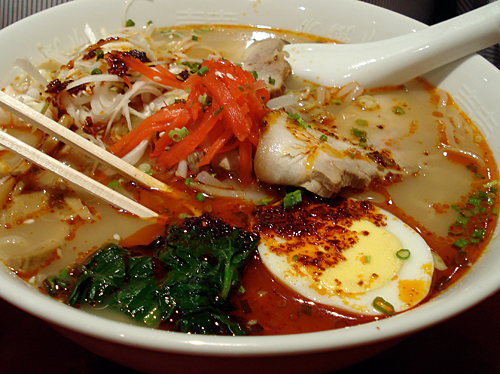
And here's negi ramen (ramen with lots of sliced leeks) at...I think it was Higuma. Again, soup was fine, the char siu a bit fatty but good, noodles could have been better, but was still ok.
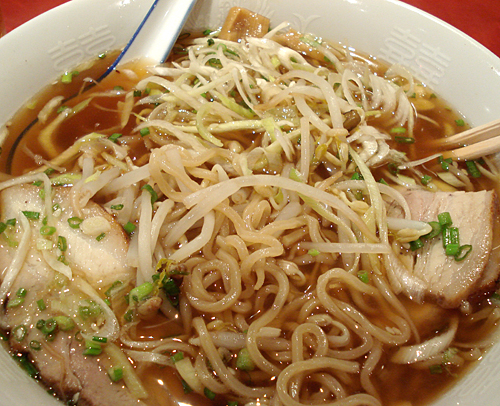
A bowl of ramen on its own is around 7 to 9 Euro; as a set menu with gyoza dumplings and such, it's around 12 to 14 Euro. It compares favorably to set menus at French restaurants in the area.
(On the other hand, cheap sushi in Paris - just say no.)
We did venture out beyond the Opéra Japanese area. Following up on a rave review on a Japanese blog/site aimed at expats and tourists, we sought out some Korean fried chicken at Han Lim, an established Korean restaurant in the 5e, right off the Rue Mouffetard at the Place Contrascope.
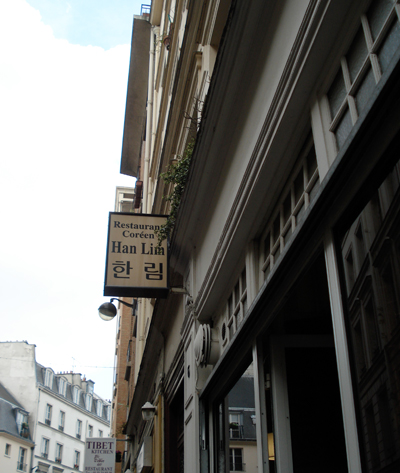
I had been craving KFC ever since...oh ever since I was in New York in November, to be honest. And the version here did not disappoint. It was some of the best Korean fried chicken I've ever had. Crispy, light, and juicy; very more-ish. It was 14 Euro per person for a menu starting with soup (I had a delicious spicy-pork soup), the KFC with the usual delicious Korean vegetable side dishes (kimchi, namul) and rice, and tea. I seriously wanted to take home a bucketful of that chicken, but was reluctantly convinced not to since we had other dinner plans. Not to mention scheduled afternoon stopovers at Sadaharu Aoki and Berthillon. I sometimes wish that I had an extra stomach. (Besides, I don't think they do takeout...)
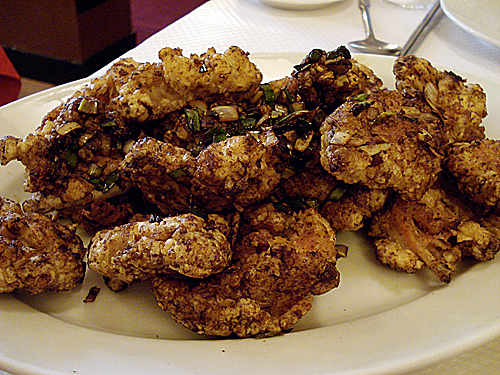
I wasn't able to stay 100% focused on Japanese/Asian food. I couldn't resist a stopover in the Marais (my excuse: I wanted to check out the newer bento boxes at Muji) for a Middle Eastern food fest at Chez Marianne.
I am not sure what I like the best: the tarama, the falafel, the bland yet oddly addictive chopped liver, or the green olive tapenade. It's all good though. With a big basket of bread it's 12 Euro per person.
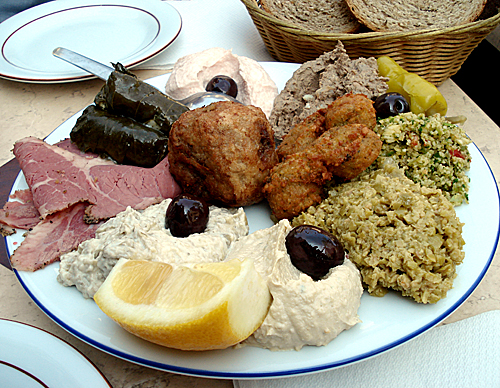
And speaking of falafel, there's also l'As du Falafel, right around the corner...we passed on it this time since we were full to the brim from Chez Marianne, but next time...
Epilogue: 'Other cuisines' and Paris
As I write this and look over my photos, it really strikes me that there's something seriously wrong about the last sentence in this article about Paris 'never embracing other cuisines'. Maybe not by the kind of people who participate in Zagat surveys, but judging from the lines forming around ramen places and okonomiyaki places and falafel places and more, it seems clear that many other Parisiens are embracing good food, whatever the origin. I would argue that people who are used to good local cuisine are likely to know what good 'other' cuisine is as well.
In any case, now that it looks even more likely that I'll be moving to France, I'm looking forward to exploring Paris and its inexpensive yet good 'other' cuisines as often as I can. 3 days was far, far too short.
Next time, I'll be talking about a very special Japanese store in Paris, one that's not quite frugal.
A few addresses
The grocery stores are all listed on the Japanese grocery stores in France handbook page.
- Han Lim
- 6 rue Blainville 75005 Paris
- Tel : 01 43 54 62 74
- Métro: place Monge (7)
- Wed - Sun 12:00~14:30 / 19:00~22:30; closed Monday, Tuesday lunch
- Korean restaurant. Has all the usual things - barbeque, soups, etc. The fried chicken is a house speciality. Yum!
There are many ramen stores in the Opera area; here are just two. Look at the menus in the windows, judge the number of people inside and waiting in line, and dive in accordingly.
- Higuma
- 32 bis rue Sainte Anne, 75001 Paris
- Tel: 01 47 03 38 59
- Métro: Pyramides or Opera
- Ramen (or as they spell it on the storefront, Lamen) restaurant. Japanese spoken.
- Mon - Sat 11:30 - 22:00, closed Sun
- Also at 163 rue St-Honoré, near the Louvre
- Sapporo Ramen
- 37, Rue Sainte-Anne, 75001 Paris
- Tel.: 01 42 60 60 98
- Métro: Pyramides or Quatre-Septembre
- Mon-Sun 11:30 - 22:30
- Ramen restaurant. Chinese spoken.
- Chez Marianne
- 2, Rue des Hospitalières-Saint-Gervais, 75004 Paris
- Tel. : +(33) 1 42 72 18 86
- Métro: Saint-Paul, Pont Marie (Cité des Arts)
- Mon-Sun 12:00 - 00:00
- Middle Eastern restaurant; a few tables, plus a takeout window.
- L'As du Falafel is right around the corner on Rue des Rosiers.
For a report on a definitely not cheap Japanese food store in Paris, see Workshop Issé.
Filed under: food travel japanese restaurants shopping france paris ramenSavings Techniques for Women Who Can't Save
This article about my favorite Japanese personal finance book is part of Frugal Food Month. While it's not directly about food, I hope it's of interest to Just Hungry readers anyway!
Previously, I wrote about some household budget management tools and methods which are fairly standard in Japanese society. While I've known all about these things for years - the kakeibo household ledger, the envelope management method, and so on - I had a hard time following these methods myself for a very long time. As a result, my personal savings have always been on the meager side, to put it mildly.
It actually took a small book that I picked up a couple of years ago to make me really see the light. The book is called Finally This Time! Savings Techniques for Women Who Can't Save (貯められない女のためのこんどこそ!貯める技術). It's actually a manga (comic) book. In Japan, it's quite common for difficult concepts to be explained with manga. And what's more important to really understand than how to manage your money?
The book starts by recounting how the author, Kyoko Ikeda, was totally unable to accumulate any kind of savings. One day she discovers that she only has about 11,000 yen in the bank (roughly US $110 at current exchange rates), and that has to last her for 10 days until her next client payment (she's a freelance illustrator and manga artist) is due in. She somehow manages to make it through those ten days, and goes to the bank fully expecting the client payment to be in...and it isn't. She has a serious moment of panic, especially when she goes home and tries to get online - and she can't. Has her internet already been cut off due to nonpayment? What is she going to do? What about the rent that's due?
She survives that crisis when the payment is credited to her account later that day. Some time later, she goes to a class reunion, where she talks to a former classmate who not only have bought their own home already, but has paid off the mortgage. She realizes that she's single, in her late 30s, has no savings or any kind of assets to her name, and is always living from payment to payment, walking a financial tightrope.
She wonders, where has all the money gone? It's not like she hasn't been earning a good income. Her basic expenses like rent are not that high either. She doesn't buy expensive clothes or accessories, or go on lots of trips. When she really analyzes her past spending habits, she realizes that she's just been frittering her money away. Where did it go: On things like an expensive computer she really couldn't afford (on 'easy monthly payments' of course); lessons for things she was all fired up to learn, but never followed through on; equipment and stuff for hobbies soon abandoned. She also has a habit of comforting herself with food (chocolate, an ice cream sundae, a nice curry at the local restaurant...) or little trivial, non-lasting purchases (Aromatherapy! Miracle skincare products!) Finally, she's also always fighting clutter and disorganization at home, and constantly buying new organizing gear - more shelves, more boxes, more...
Does any of this sound familiar to you? To me, it was almost like reading about myself, especially the parts about using small purchases to make myself feel better. And getting frustrated with all the clutter and going out to buy more and more organizing gear. Oh, and the part about spending too much on computer stuff too. And the supplies for soon-abandoned hobbies (ouch!). And the lesson fees for half-finished courses (ouch again!). And, and... The similarities were quite shocking.
Keeping it simple
Of course, it wouldn't be a personal finance book without solutions. What made sense to me was that she kept it very simple.
- Every month, she'd subtract her fixed costs - rent, utilities, and so on from her income.
- The rest, she withdrew as cash and divided up into envelopes (see the envelope method described previously). She made a strict pact with herself never to let one envelope/category "borrow" from another; e.g. if her entertainment expenses envelope ran out, no transferring from her office supplies envelope!
- She kept a kakeibo (household ledger), but didn't use a commercially available one, since she found the categories to be too complicated. She just used a regular notebook, using 2 pages per week, and used broad categorizations that fit her lifestyle and spending patterns. One that made a lot of sense to me is that she divided her food spending into 'food for survival' and 'food for comfort/entertainment' categories. Things like eggs, milk, vegetables were 'food for survival'; chocolate, cake, or eating out for the sake of eating out were 'food for comfort/entertainment'. Most if not all Japanese pre-printed kakeibo divid 'food' into too many categories (carb, protein, vegetables, etc) which can get tedious to keep track of.
- Instead of writing down what she spent, she just stuck down her receipts and wrote down the totals.
- She got rid of unplanned spending. Whenever she wanted to buy something, she would write down her requirements first, and carry the notes around until she found something that fit.
- She had a couple of variations on the coin saving scheme. First of all, whenever she could she paid with bills rather than coins, so she'd always end up with change. Then any change, especially 'big' change (500 yen coins) left at the end of the day was put into the coin jar. (That would be easier to duplicate in countries that have big-denomination coins; here in Switzerland I try 5 franc and 2 franc coins. In the US, you could try quarters, those elusive dollar coins, or even $1 and $5 bills.) At the end of the month, the contents of the coin jar were deposited into a separate savings account, at a different savings institution from her regular bank (she chose the post office).
Decluttering leads to saving
Ms. Ikeda's best known books are actually about decluttering and organization. I picked those up before getting to her savings book. In any case, she says, and I agree from my own experience, and decluttering your personal space leads to saving money too. Not only do you stop wasting money on duplicate purchases (10 pairs of scissors because you keep misplacing them, etc.) but clearing your physical space seems to clear your mental space too.
So, has it worked for me?
Since reading this book as well as her decluttering books, I can say that I have improved my personal finances quite a bit, as well as decluttered my environment and life. It's been a small yet significant factor in leading to the situation I'm in now, looking for an ideal place to live and work, with just enough funds to make that choice. So I'd say it has worked, and is continuing to work.
Ms. Ikeda has a lot of other ideas in her little book, some of which go a bit too far for me (like when she determines that white flour is the cheapest carb, and tries to live on udon, okonomiyaki, and so on). But I truly love this book. Maybe it should be translated into English! In any case I've tried to cover the highlights of the book here. If you do read Japanese at all, and have problems with saving money, I highly recommend it. Besides being practical, it's very cute and funny too, and while the title says 'For Women Who Can't Save' it's just as useful for men too I think. (Her organizing and decluttering books are just as good, if not even better. If you all are interested I'll try to describe them also in an upcoming post. She's also published a couple of books on investing in stocks, and new one on dieting, but I haven't read those yet.)
(Note: a related post on my language blog about a term she uses often...that leads to a lot of wasteful spending!)
Filed under: books and media essays japanese favorites budgeting

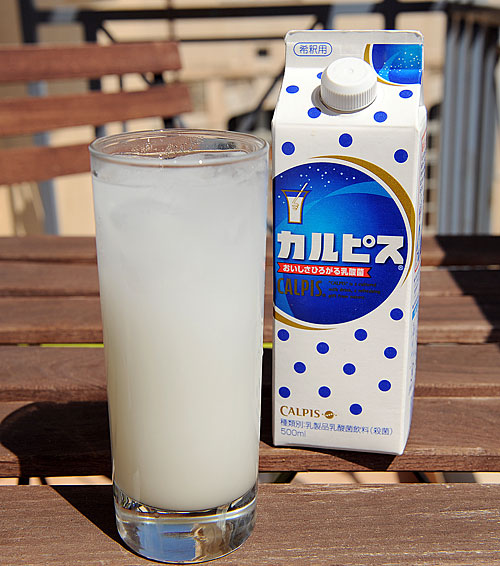
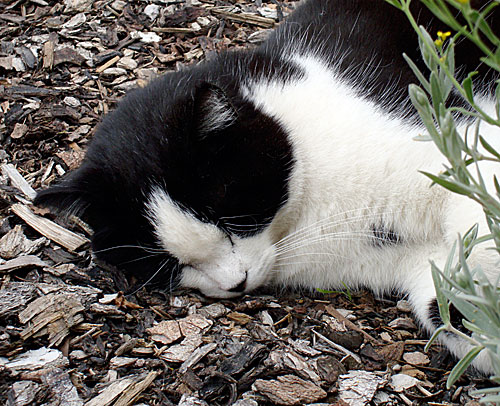


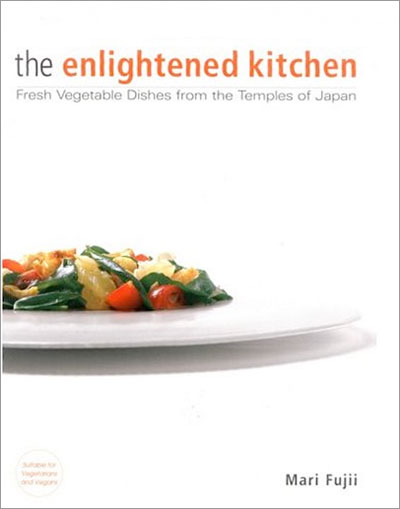
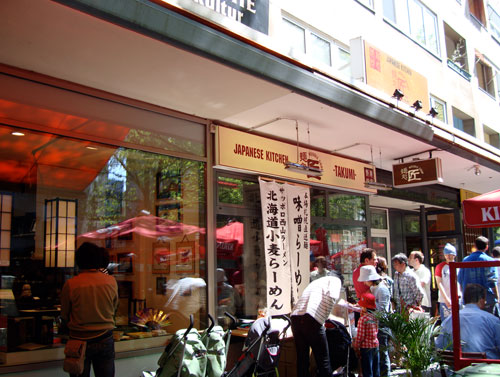
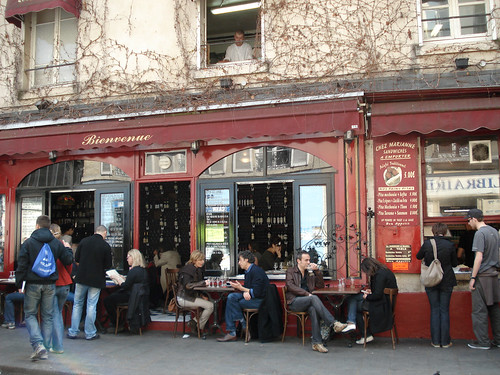
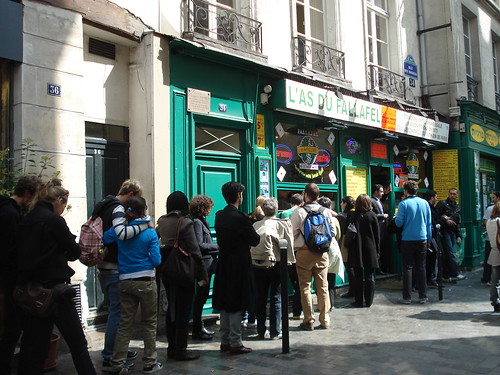
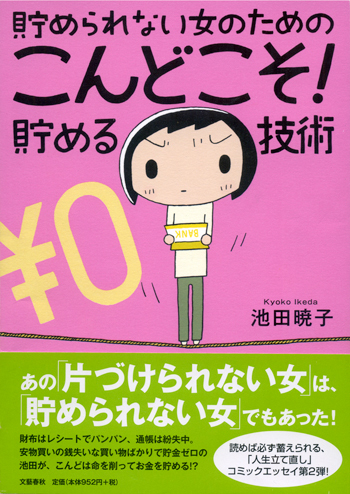
 Welcome to Just Hungry, where we serve authentic Japanese recipes and more! I'm
Welcome to Just Hungry, where we serve authentic Japanese recipes and more! I'm 













